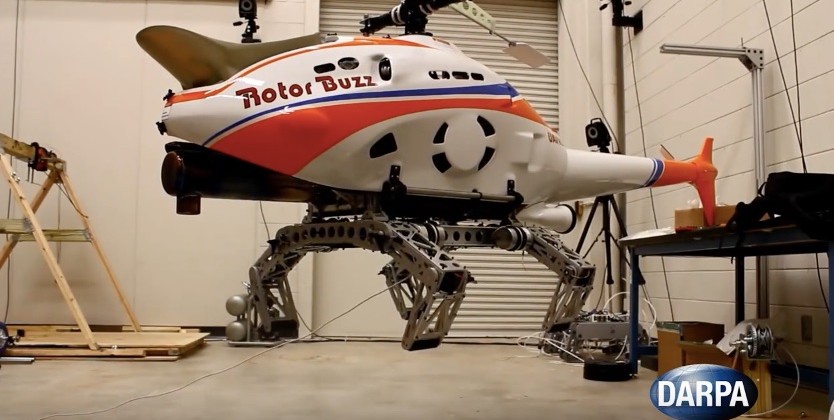-
Tips for becoming a good boxer - November 6, 2020
-
7 expert tips for making your hens night a memorable one - November 6, 2020
-
5 reasons to host your Christmas party on a cruise boat - November 6, 2020
-
What to do when you’re charged with a crime - November 6, 2020
-
Should you get one or multiple dogs? Here’s all you need to know - November 3, 2020
-
A Guide: How to Build Your Very Own Magic Mirror - February 14, 2019
-
Our Top Inspirational Baseball Stars - November 24, 2018
-
Five Tech Tools That Will Help You Turn Your Blog into a Business - November 24, 2018
-
How to Indulge on Vacation without Expanding Your Waist - November 9, 2018
-
5 Strategies for Businesses to Appeal to Today’s Increasingly Mobile-Crazed Customers - November 9, 2018
Insect-like Legs make Helicopter land on uneven Surfaces
Military researchers are looking to give helicopters the same kind of agility when landing as they have in the air by giving them flexible, adaptive robotic legs that would let them land on uneven, hard or moving surfaces.
Advertisement
Insects’ abilities to land on uneven surfaces have long fascinated designers in the aviation community, since ideal landings aren’t always possible – especially in the cases of disaster relief and military operations.
The Defense Advanced Research Projects Agency (DARPA) is testing a chopper that has four legs that resemble legs of an insect.
Helicopter pilots have an terrible lot to deal with during takeoff and landing; handling downward resistance, uneven landings and weather conditions to name a few.
Funded by DARPA’s Mission Adaptive Rotor (MAR) programme, the robotic landing gear system now undergoing continued development by the Georgia Institute of Technology.
The new landing gear features four robotic legs with bendable “knees” that turn a normal helicopter into what looks like a giant, mechanical fly. Initial tests conducted near Atlanta showed that the landing gear can adapt to slopes as steep as 20 degrees, Foxtrot Alpha reported Sunday.
Embedded with force-sensitive contact sensors on each of its feet, the robotic legs determine the precise angle they need to assume to keep the helicopter from tipping over when it lands on uneven ground, such as on the side of a hill or mountain.
DARPA programme manager Ashish Bagai said: “The equipment mounted on an otherwise unmodified, unmanned helicopter successfully demonstrated the ability to land and take off from terrain that would be impossible to operate from with standard landing gear”.
That ensures the helicopter remains level on landing, minimizing any risk of the craft’s rotor blades touching the chosen landing site, the researchers say.
Advertisement
The robotic legs automatically unfurl as the helicopter approaches land, “feeling” out for the ground below using an array of sensors. But as the technology fundamentally works in the same way, there’s no reason to believe this won’t make its way onto full-sized helicopters in the future.




























